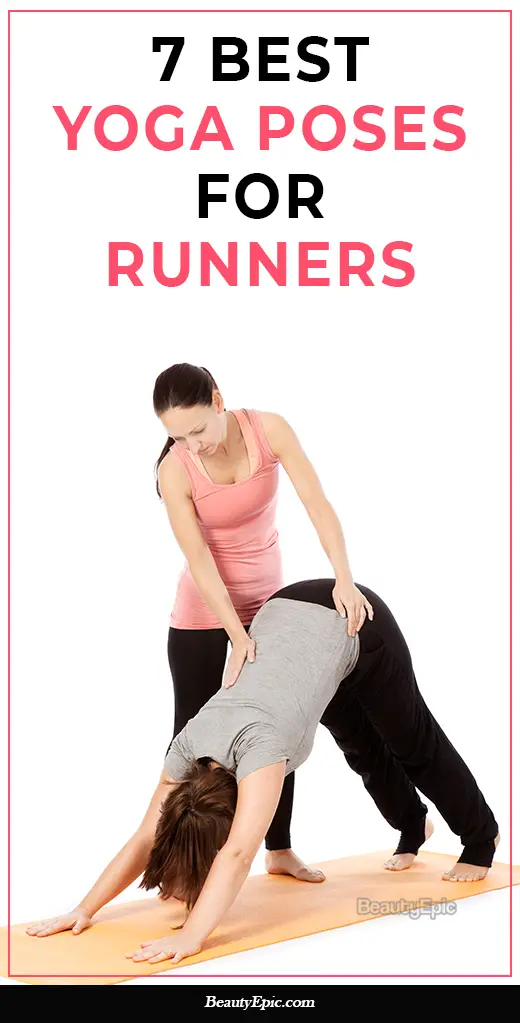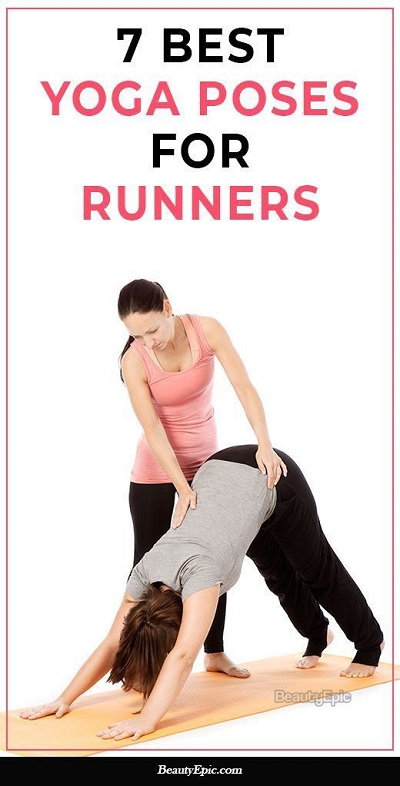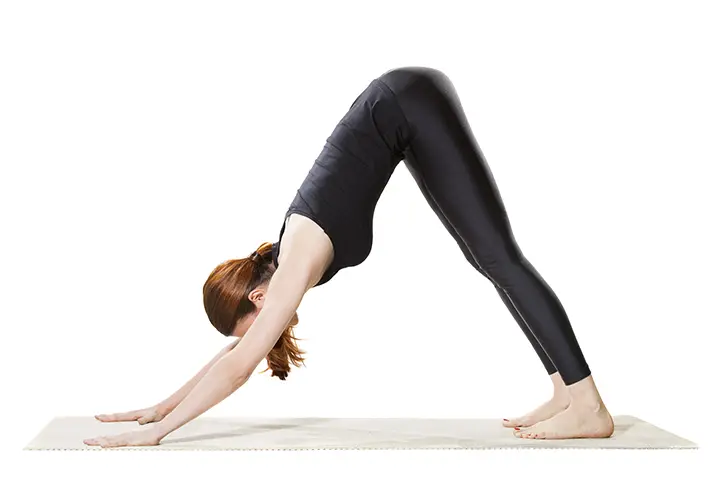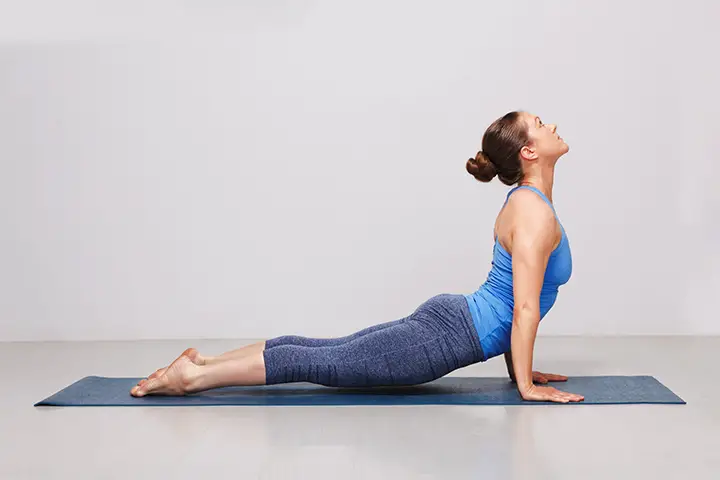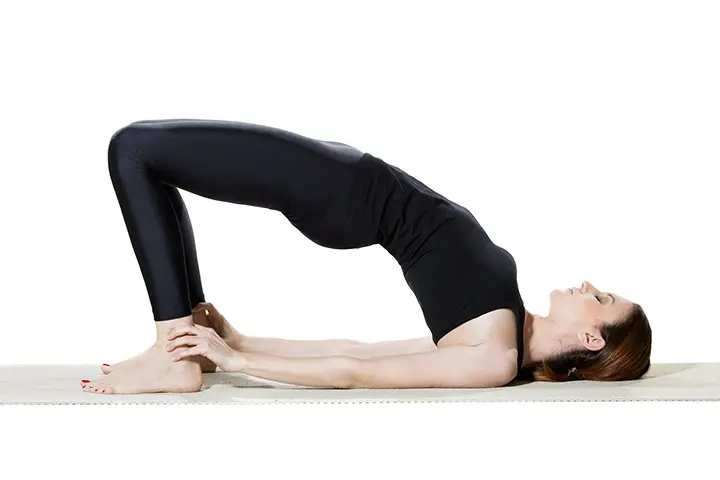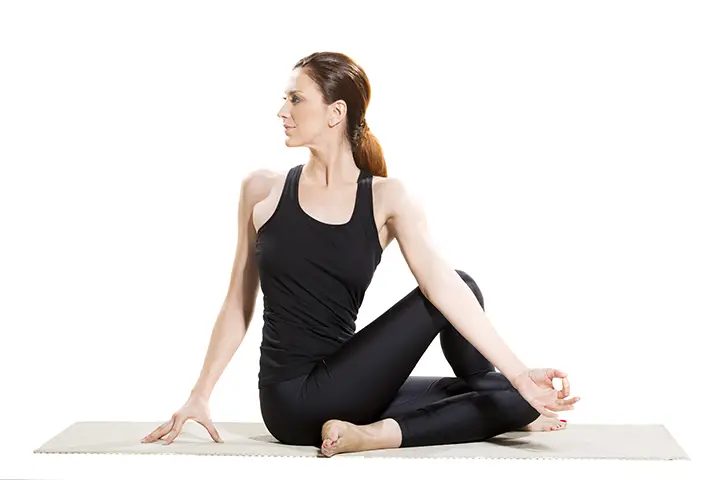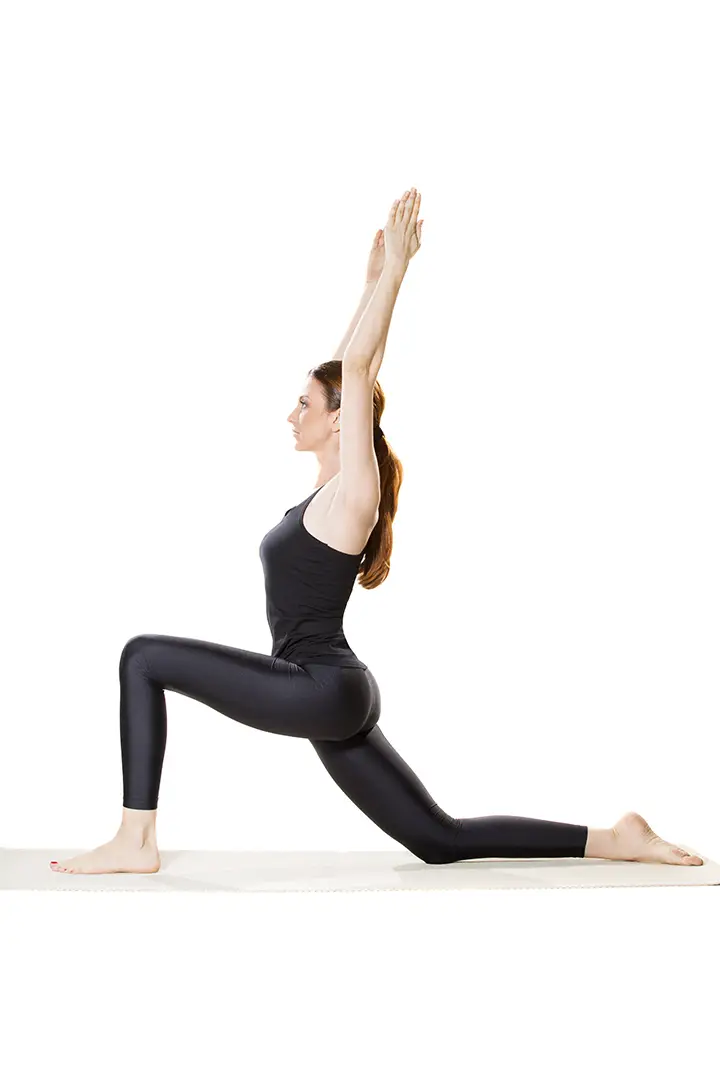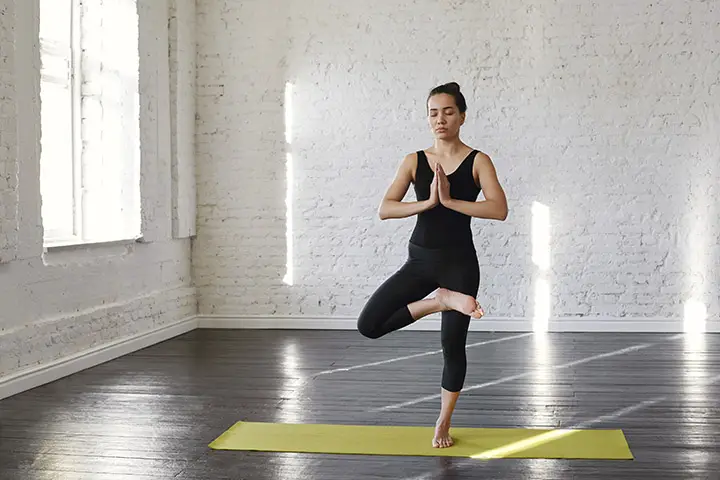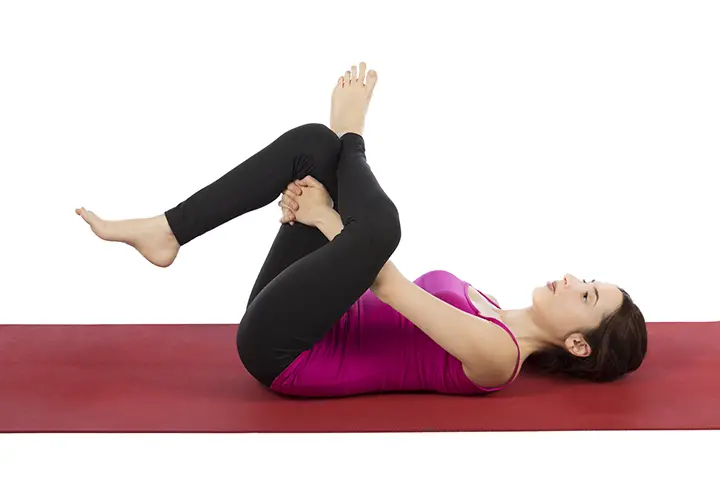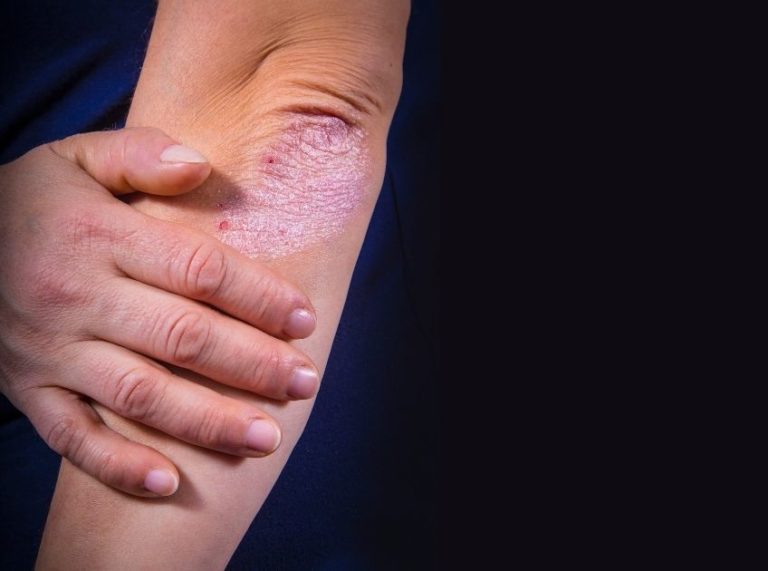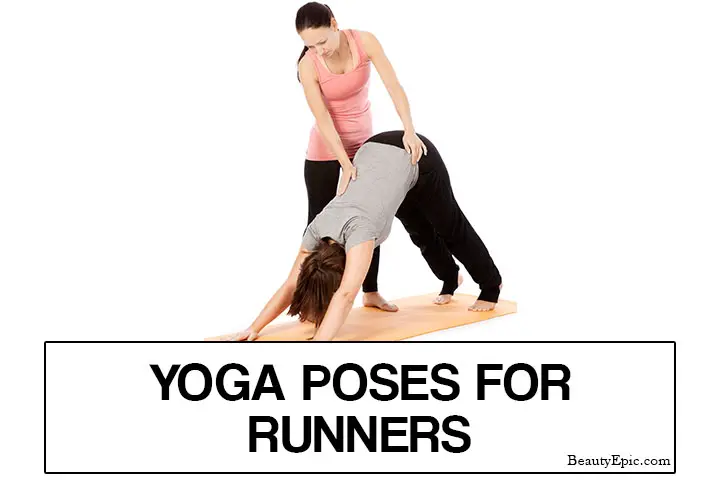
Important: This article is for informational purposes only. Please read our full disclaimer for more details.
There are several yoga poses that runners can practice which helps to stretch and strengthen different body muscles and parts. They also help in repairing fatigued muscles or soreness that people face from prolonged running sessions. Runners Can Try the Poses Below with Repetitions to See More Benefits:
7 Best Yoga Poses For Runners
1. Downward Dog
How to Do:
- Layout a floor mat for this exercise.
- Stand straight on one edge and rise up both hands.
- Stretch up and forward, keeping knees straight.
- Bend down, touching the mat and without bending the knees.
- Bend your head inside to look back.
- Push heels down on the ground that helps to improve the stretch.
Number of Repetitions: This can be done four to five times with a hold of the pose at least 30 seconds.
How it Help: For runners who usually face foot or knee problems, they need to try yogic poses that will help to stretch and lengthen the quads, hips, calves as well as hamstrings. It also helps to open up the arms and stretch the upper back. The repetitive backward and forward swings are helpful.
2. Upward Facing Dog
How to Do:
- Use a floor mat for this exercise.
- Lie down in a plank position with hands in front on either side.
- Push up from the plank position, supporting the upper body with your arms.
- Roll the toes and arch up to the chest towards a back bend.
Number of Repetitions: The exercise can be done three to four times with the pose being held at least 30 seconds.
How it Benefits: The exercise helps to strengthen the upper body which includes core and the arms. With this upper body exercise, it can help to strengthen the back as well as the core. Stretching back also helps to strengthen and stretch the back muscles.
[ Read: Yoga Poses for Knee Pain Relief ]
3. Bridge Pose
How to Do:
- Start by lying flat on a floor mat.
- Bend the legs and places hands on either side.
- Keep hands on the sides and lift the hips off the floor.
- Raise the core and hold in position.
- Bring back to the resting position by lowering the hips.
Number of Repetitions: Do the exercise by holding the pose 30 seconds each and repeat 10 times.
How it Benefits: The exercise offers several benefits. For instance, it helps open up shoulders and front body muscles. It also focuses on the core. It helps to counter pose running where we tend to hunch forward. By lifting the hips towards the sky one engages the core and also works the pelvic floor.
[ Read: 19 Yoga Postures for Weight Loss ]
4. Seated Spinal Twist
How to Do:
- Sit down on the floor or on a mat.
- Bend knees and cross one leg over the over, towards the hips.
- Twist the upper body the other way.
- Hold and pull the thigh with the hand towards the other side.
- Balance the twist by holding the floor with the other arm.
- Repeat on the other side.
Number of Repetitions: This exercise can be done ten times. Hold the pose every time for thirty seconds.
How it Benefits: This stretch helps to work the lateral body muscles. When one is running they are stuck in the same position. With twists, the body is loosened and it also helps to lengthen the spine. This helps overcome stiff shoulder or neck. It helps to stretch and overcome stiffness in most of the upper body muscles.
[ Read: Top 7 Arm Balance Yoga Poses ]
5. Low Lunge Pose
How to Do:
- Start by standing straight.
- Raise arms above the head and come down in plank position.
- Hold the pose with straight arms on either side and bring one leg in front with bent knee.
- Keeps the other leg stretched out at the back with toe touching the floor.
- Raise the head and bend backward.
- Change legs and repeat.
Number of Repetitions: The exercise can be repeated 5 times for each leg and hold each pose five to ten seconds.
How it Benefits: This is a useful yoga position that engages the whole body. It helps improve balance in runners. Lunges help to stretch out front and back of legs as well as open up hips and strengthen the core. The lunge can be taken lower for more effect.
[ Read: 8 Yoga Poses for Tight Hips ]
6. Tree Pose
How to Do:
- Stand straight on bare feet.
- Rise up both arms and bring them close together, palms facing inward.
- Raise one leg to balance against the thigh of the other leg.
- Hold the position for some time and return back to the standing position.
- Fix gaze at an object in the distance such as a spot on the wall.
Number of Repetitions: The exercise can be held for 10 to 20 seconds each time and repeated five times. Aim to hold the pose for 30 seconds.
How it Benefits: It helps to enhance balance that is good for athletes, especially runners. It also helps in strengthening the legs. One can challenge their balance more by keeping eyes closed.
[ Read: Yoga Poses to Improve Core Strength ]
7. Reclining Pigeon Pose
How to Do:
- Lie down on the floor or on a floor mat.
- Bend the knees and keep hands on the sides with palms down.
- Cross one leg across another knee.
- Pull the legs towards the chest in this position.
- Return the crossed leg to the floor.
- Repeat the position with the other leg.
Number of Repetitions: The stretch should be held for 30 seconds each time and repeat 10 to 15 times.
How it Benefits: This is a pose that can also be done standing but it does put pressure on the knees. Hence, it is a more relaxed stretch that can be done in a reclining position. The stretch helps the hamstrings and the glute muscles. With repeated movements, the thighs are stretched and relaxed.
The above positions help to prepare the body as well as overcome fatigue and stiffness that runners face. It is best to counteract a long-running session with these exercises. These help to relax and stretch the muscles and help in improving repair of the same.
You Might Also Like:
- 7 Best Morning Yoga Poses to Start Your Day
- Yoga for Neck Hump: 5 Gentle Poses to Realign Your Spine
- Yoga for Slim Waist: 7 Best Yoga Poses To Slim Your Waist
- How To Cure Slip Disc (Herniated Disc)
- 6 Simple Yoga Poses to Increase Height
